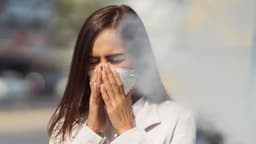Home / Health / Breathe Carefully: Exercising in Polluted Air Poses Serious Health Risks
Breathe Carefully: Exercising in Polluted Air Poses Serious Health Risks
16 Nov
Summary
- Breathing rate rises during exercise, increasing intake of pollutants like PM2.5, NO₂, and ozone
- Experts advise avoiding high-intensity outdoor workouts on moderate-to-severe AQI days
- Pollution exposure can reduce exercise benefits and increase risks for vulnerable groups
As of 2025-11-16T06:25:47+00:00, experts warn that exercising outdoors in polluted air can pose serious health risks. During exercise, breathing rate rises, and people take bigger breaths, shifting from nose to mouth breathing. This increases the intake of airborne pollutants like fine particles (PM2.5), nitrogen dioxide (NO₂), and ozone (O₃).
While regular exercise provides numerous benefits, the article explains that the increased pollutant exposure can reduce some of these advantages and increase risks, especially for individuals with asthma, heart disease, or pregnant women. Experts advise checking the local Air Quality Index (AQI) and avoiding high-intensity outdoor workouts on moderate-to-severe AQI days. Instead, they recommend choosing parks, green corridors, or early morning/late evening sessions when traffic is lower.
For vulnerable groups, the article suggests favoring indoor clean-air options on bad AQI days. It also cautions against common mistakes, such as ignoring the AQI, training on busy roads, and doing long-duration high-intensity workouts when air quality is poor.




